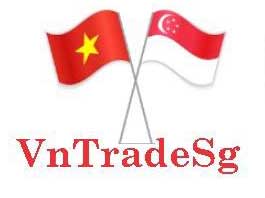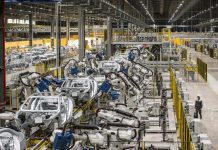The EU-Vietnam Free Trade Agreement and Investment Protection Agreement raise many hopes for all of Vietnam’s economic sectors. John Campbell, manager of Industrial Services from Savills Vietnam, assesses the impacts of these new agreements on the Vietnamese industrial sector.
Last year, Vietnam’s manufacturing and processing sector experienced continued growth amid the US-China trade dispute, including exciting new investments. Arguably, the most notable drivers for the industrial sector last year included the signings of key free trade agreements.
Last year, Vietnam’s manufacturing and processing sector experienced continued growth amid the US-China trade dispute, including exciting new investments. Arguably, the most notable drivers for the industrial sector last year included the signings of key free trade agreements.
The Comprehensive and Progressive Agreement for Trans-Pacific Partnership was officially set in motion in 2019 after years of negotiation and adjustments, and is expected to increase Vietnam’s GDP by 1.32 per cent by 2035. In addition, the EU-Vietnam Free Trade Agreement (EVFTA) was finalised in June and will eliminate 99 per cent of customs duties between the EU and Vietnam.
With these historic agreements taking place, the way other countries look at Vietnam is changing, resulting in a higher demand for skilled labour and education.
On February 12, we witnessed another huge milestone as the European Parliament ratified the EVFTA and the EU-Vietnam Investment Protection Agreement (EVIPA).
Therefore, only one more step remains before the agreement comes into full effect – the ratification by the European Council and by Vietnam’s National Assembly, which is expected to take place in this summer.
Both the EVFTA and the EVIPA mark Europe’s most comprehensive trade pact with a developing country and signify its ongoing commitment to Asian markets. The impacts of the agreements are expected to be unparalleled.
According to the Ministry of Planning and Investment, by the end of 2025 both agreements are estimated to increase Vietnam’s GDP by 4.6 per cent and its exports to the EU by 42.7 per cent.
On the other side, the European Commission forecasts that by 2035, the EU’s GDP will rise by $29.5 billion and its exports to Vietnam by 29 per cent.
 |
| John Campbell, manager of Industrial Services from Savills Vietnam |
Achieving access
After the ratification by the National Assembly, this agreement will be essential for the transition of the country’s industrial sector.
By enabling the latest production technologies and increasing workforce training, the Vietnamese government is actively easing qualms around viability, labour shortages, and rising costs. Moving to a more transparent business environment will help mitigate investors’ concerns and improve quality.
The EVFTA in particular enables Vietnam’s economy to move away from exporting low-value products and inputs to higher-value goods in high-tech, electronics, vehicles, and medical devices.
Global trade networks will give Vietnam access to a more diversified range of sourcing partners, allowing for cheaper imports of inputs or intermediate goods, which in turn will boost the competitiveness of Vietnam’s exports.
In addition, through more partnerships with foreign companies, Vietnam can reap the benefits of knowledge and technology transfer that comes with such investments.
As Vietnam opens its doors to EU manufacturers in industries such as food and beverage, fertilisers, ceramics, and building materials, the tariff elimination will also benefit the country’s key export industries to the EU, including the manufacturing of electronics and smartphones, textiles and garments, and agricultural products.
Since last June, more industrial developers in Vietnam are confident that the EVFTA will boost investment in manufacturing and diversify their occupier’s base.
For example, general director Bruno Jaspaert of DEEP C Industrial Zones (IZ) believed the agreement has already instilled more confidence in European manufacturers in Vietnam, and new European investors have already visited DEEP C last year, seeking to open a manufacturing base in anticipation of the benefits the deal will bring.
In preparation for the finalisation of the agreement, as a European company itself, the IZ was already strategically targeting the European market last year, even welcoming the delegation of EU ambassadors to visit the company’s site and present the strengths and uniqueness that the northern port city of Haiphong, Vietnam’s industrial sector, and the overall economy have to offer.
With the agreement being ratified this year, other respective IZ developers also expect to see a growing interest from European manufacturers in the next couple of years.
Jockeying for position
As demand continues to outpace supply, particularly in key industrial provinces, with occupancy rates reaching 75 per cent in operational IZs nationwide, the competition for well-located manufacturing plots near the country’s main cities and ports has increased.
This, coupled with an influx of new international manufacturers, gives developers the right opportunity to strategically choose their occupiers and lease it to multinational companies in high-value added industries.
The industrial sector is growing strongly with a 10-fold increase in foreign direct investment (FDI) over the last decade. Good land supply is facilitating upcoming manufacturing projects with a rise of rental options and many solutions.
Vietnam must be more selective with projects to move up the value chain, improve its competitiveness, and ensure sustainable growth. Low labour costs and government incentives, particularly preferential tax rates, will continue to be critical drivers of FDI.
However, to maintain the transition to higher-value industries, Vietnam must focus on the quality rather than the quantity of investments.
Amid a worldwide slowdown, 2019 was an exceptional year for Vietnam’s economic growth. In that time, the country’s impressive macro-economic indicators supported the strong performance of the real estate market, specifically the industrial real estate segment.
The amount of investment hit $24.56 billion, almost two-thirds of the total inflows. Vietnam’s economic outlook in the medium- to long-term is mostly positive, with the World Bank forecasting that real GDP growth will remain robust at 6.5 per cent in 2020 and 2021.
Last year marked 10 consecutive years of increasing FDI inflows in the country and by the end of the year, the manufacturing and processing industry attracted the highest.
This year also got off to a positive start. From January to February 20, Vietnam attracted over $5 billion in FDI, representing an on-year rise of 4.7 per cent, according to the Ministry of Planning and Investment. Of this, $4.5 billion was poured directly into new related projects. Most inflows were in the production of electricity, water, and gas, with the manufacturing and processing sector in second place, attracting $856.3 million, or 16 per cent of total inflows in the first two months of the year.
Vietnam’s recent FTAs and superior trade networks will continue to push the country as a key destination for FDI, although it will also make the country more vulnerable to future slowdown in the global demand.
| Recommendations for an FDI strategy for 2020-2030
For the 2020-2030 period, the Ministry of Planning and Investment and the International Finance Corporation has outlined the steps required to increase the quality of foreign investment. They include: – Creating a national skills development plan to increase the share of skilled labour; – Modernising investment promotion activities with focus on priority sectors; – Implementing supporting policies for local businesses; – Opening service sectors such as education, logistics, and financial services; – Setting up a new FDI management agency with high budget, capacity, and authority; – Reviewing and adjust current investment incentives and policies to ensure FDI quality; and – Reducing the negative impacts of Industry 4.0. |















